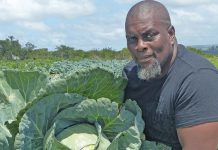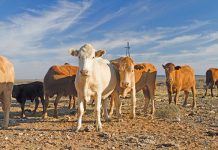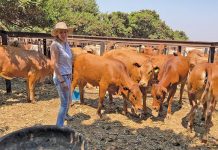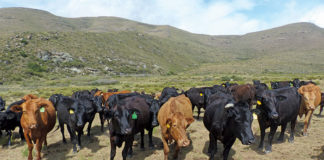
His breeding philosophy places great emphasis on performance figures in selecting and buying new breeding stock.
“It doesn’t help to say this one looks good and that one doesn’t,” he explains. “A bull or cow should prove itself. The only way to do that is through performance testing. Genetics is all about performance testing. Poor genetics will show up until the fourth generation.”
Willie also selects for milk production and fertility in the herd. When assessing a cow, he looks for “soft femininity” in the face with correct width between the eyes. “The muzzle should be strong and round and the neck well-muscled,” he adds.
.jpg)
Willie du Plessis
“A breeder should also steer clear of a large bone structure. If a calf has a large head, the cow is sure to have a difficult birth.” When the pin bones are lower than the hip bones, the birth canal is correctly angled, reducing calving problems.
Another consideration, according to Willie, is the coat. With the Braunvieh, a smooth hair coat is preferable as it harbours fewer ticks in the warm, bush environment of the North West. This shows the adaptability of the breed.
Coat colour is also important. It should be dark brown, and a bull should darken from its neck towards its rib cage and down its hips.
Asked to sum up the essence of his approach and his success, Willie says: “Over the years, I came to realise that stud breeding was all about quality. And genetics is the basis for this quality.”
Read more about Willie du Plessis’ breeding success in the 17 October 2014 issue of Farmer’s Weekly.













